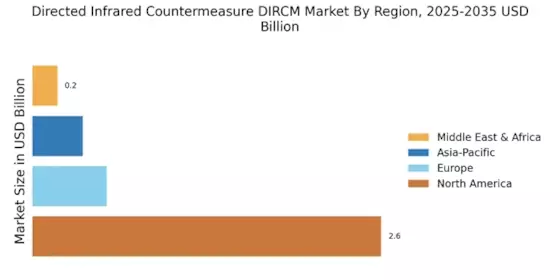The Directed Infrared Countermeasure DIRCM Market represents a pivotal sector in defense technology, focusing on the development and deployment of systems designed to protect aircraft from advanced infrared threats, such as missile attacks.
With increasing geopolitical tensions and a notable rise in asymmetric warfare, the demand for DIRCM systems has surged. Various key players are actively participating in this market, offering innovative technologies and solutions to enhance aerial defense capabilities.
Competitive insights highlight that companies are not only vying for market share through technological advancements but are also forging strategic partnerships and collaborations to expand their reach.
These dynamics reflect a rapidly evolving landscape where ongoing research and development efforts, coupled with a focus on integrating artificial intelligence and machine learning, are shaping the future of DIRCM systems and their applications within modern aerial warfare frameworks.
In this competitive arena, Northrop Grumman stands out as a formidable player with a strong market presence in the DIRCM sector. The company has established itself through its advanced technological offerings, including sophisticated electronic countermeasure systems that are designed to detect and disrupt infrared tracking systems.
Northrop Grumman leverages its experience in defense electronics and aerospace to innovate effectively, ensuring that its DIRCM solutions meet stringent military standards while addressing emerging threats.
The strength of Northrop Grumman lies in its commitment to research and development, allowing it to stay at the forefront of the market by continuously enhancing the reliability and effectiveness of its DIRCM products.
This focus not only solidifies its reputation but also positions it favorably against competitors in the realm of airborne protection solutions.
Elbit Systems is another significant contributor to the Directed Infrared Countermeasure DIRCM Market, recognized for its cutting-edge technologies and integrated defense systems. The company specializes in a range of defense solutions, including advanced DIRCM technologies that enhance situational awareness and provide robust protection against heat-seeking threats.
Elbit Systems emphasizes adaptability and innovation within its DIRCM offerings, ensuring that its products are compatible with a variety of platforms, including unmanned aerial vehicles and helicopters.
Their strengths lie in extensive operational experience, which informs the development of practical solutions tailored to address real-world defense needs.
Elbit Systems' commitment to developing future-ready technologies bolsters its competitive stance, making it a key player in shaping the future of infrared countermeasures and contributing to the broader defense landscape.


















Leave a Comment